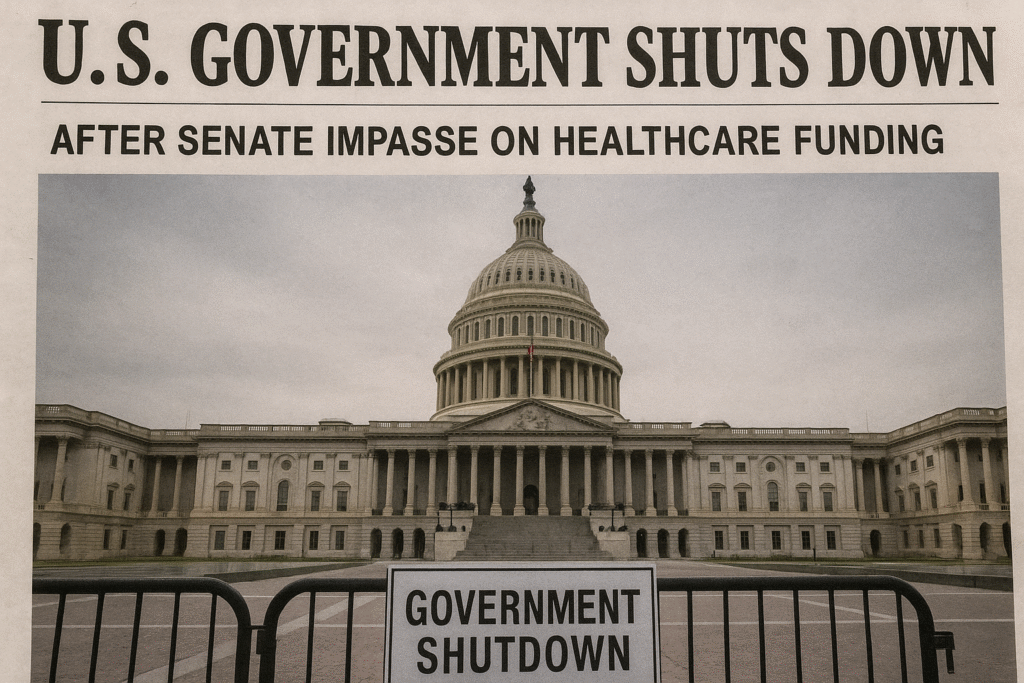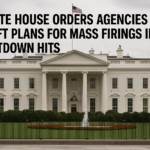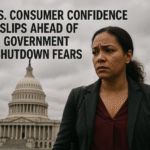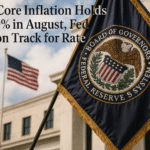By Harshit, October 1, 2025 | Washington, D.C. | 1:00 AM EDT
A Historic Shutdown Amid Healthcare Standoff
The U.S. government officially shut down at midnight on Wednesday after congressional Democrats and Republicans failed to agree on a temporary funding bill. The deadlock centers on healthcare, with Democrats demanding the extension of Affordable Care Act (ACA) premium tax credits and the reversal of cuts to Medicaid, while Republicans refuse to consider those concessions before passing a stopgap measure.
This marks the first federal shutdown since the record 35-day closure that began in December 2018 during Donald Trump’s first term. With Trump re-elected last year and Republicans holding control of both the Senate and the House of Representatives, Democrats now find themselves with limited leverage.
The Partisan Divide
Senate Majority Leader John Thune accused Democrats of “sacrificing the American people to their partisan interests,” while Senate Democratic Leader Chuck Schumer said Republicans were “plunging America into a shutdown” by rejecting bipartisan negotiations.
Two competing proposals to extend government funding failed late Tuesday. Republicans pushed a bill funding operations through November 21 but without healthcare provisions, while Democrats advanced a shorter-term bill through October that also included protections for Medicaid and ACA subsidies. Both measures fell short of the 60 votes required in the Senate.
White House Escalation
President Trump signaled an aggressive stance, warning that federal workers could face layoffs if the shutdown continues. “When you shut it down, you have to do layoffs, so we’d be laying off a lot of people. They’re going to be Democrats,” Trump said, sparking criticism that the administration was politicizing civil service jobs.
Russ Vought, director of the Office of Management and Budget, released a letter blaming Democrats’ “insane policy demands” for the impasse, leaving the duration of the shutdown uncertain.
What Democrats Want
At the heart of the standoff is healthcare. Democrats are demanding:
- Extension of ACA premium tax credits, set to expire this year.
- Reversal of Republican cuts to Medicaid.
- Protection of funding for public media outlets.
- Safeguards against Trump’s use of “pocket rescissions” to redirect foreign aid.
Without the ACA tax credit extension, health insurance premiums could rise for around 20 million Americans. Meanwhile, Medicaid cuts threaten coverage for nearly 10 million people. Democrats argue these measures are essential to prevent a healthcare crisis, but Republicans insist spending decisions must be postponed until after government funding is secured.
Cracks in Democratic Unity
Despite strong rhetoric from party leaders, divisions are emerging within Democratic ranks. Three Democrats broke with their caucus to support the GOP bill on Tuesday, compared with just one in earlier votes. Senator John Fetterman of Pennsylvania, who has repeatedly voted for the Republican proposal, said his decision was “for our country over my party.”
Independent Senator Angus King also joined Republicans, warning that a shutdown would give Trump more unilateral power. “The paradox is by shutting the government we’re actually giving Donald Trump more power,” King said.
Public Opinion Split
Polling suggests the American public is divided. A New York Times/Siena survey showed just 27% support for a shutdown, with 65% opposed. Among Democrats, nearly half supported the move, while 59% of independents rejected it. A Marist poll found 38% would blame Republicans for a shutdown, 27% would blame Democrats, and 31% would fault both parties.
Senator Ted Cruz, who led the 2013 shutdown over ACA funding, dismissed Democrats’ stance as a “temper tantrum.” He predicted Democrats would eventually “capitulate” after a prolonged stalemate.
Consequences and Next Steps
The shutdown halts funding for most federal departments, except for essential services such as the military, air traffic control, and Social Security payments. However, hundreds of thousands of federal employees face furloughs, while others must work without pay until funding is restored.
Senate Republicans are planning another round of votes on Wednesday, though expectations for a breakthrough remain low. The longer the shutdown drags on, the more it will impact federal workers, contractors, and everyday Americans who rely on public services.
For now, the healthcare fight remains the key stumbling block. Unless both sides compromise, the shutdown could extend for weeks—adding uncertainty to markets, families, and the broader U.S. economy.







